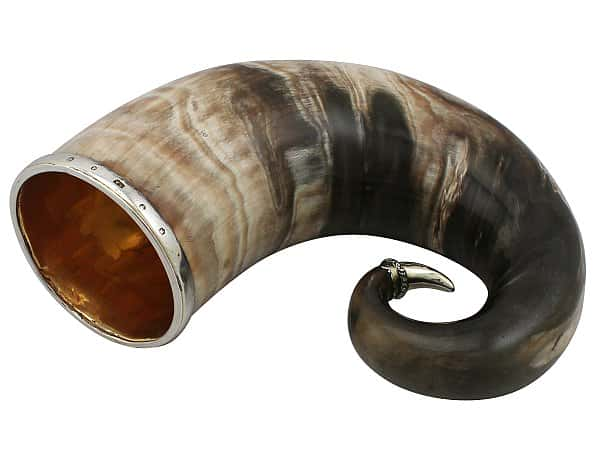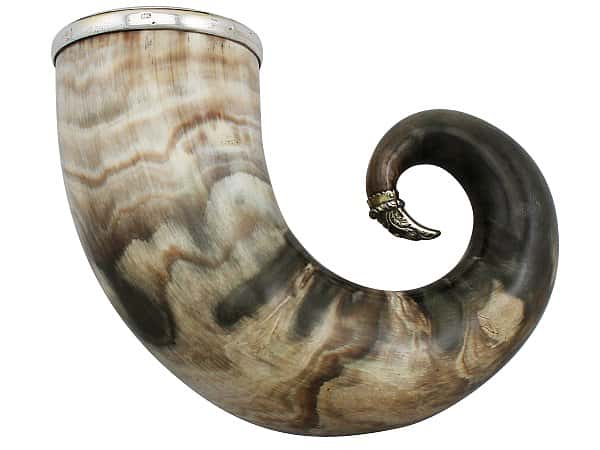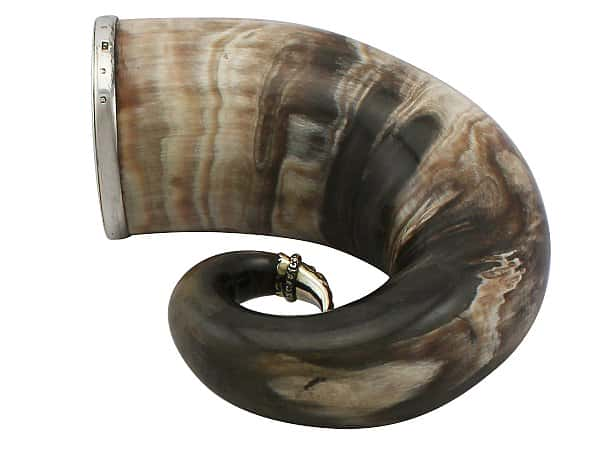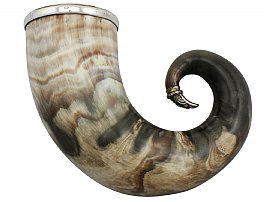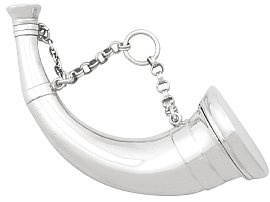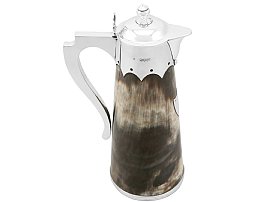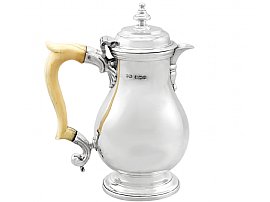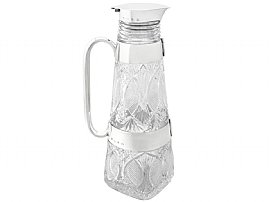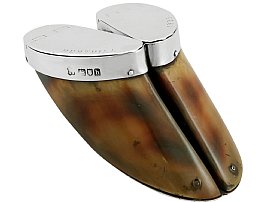Hunting Horn History
Many instruments have been used in combat, from marching drums to hunting horns. Today, the hunting horn is a collectable for anyone interested in its craftsmanship or the history of hunting itself. Although the name hunting horn can be applied to many horn-like items, there are a few features essential to deciphering whether something is a genuine hunting horn or not.
What Is a Hunting Horn?
Hunting horns are instruments used mostly in the act of fox hunting in order for members of the hunt to communicate with one another. The horns also allow the hunters to communicate with the dogs involved in hunting.
Hunting horns can be split into three main categories. Natural hunting horns are made from real animal horn, sometimes mounted in metals like silver. Horns made from materials designed to imitate animal horn are also attributed to natural hunting horns. Animal horns have existed for millennia, evolving alongside humanity. The existence of hunting horns predates the act of fox hunting, and in many ways the fox hunting that is banned today was enabled by the existence of the horn.
A second category of hunting horn is the coiled, metal horn. These horns existed in Ancient Rome. These horns were often made out of brass, allowing for more of a tune to be played than the animal horns allow. While animal horns create unique, one-note instruments, coiled metal horns could be crafted in bulk. This meant that the hunting party could be significantly larger, unifying their horn blasts for an organised hunt.
The final category is a small, straight metal horn. This is usually known as an English hunting horn by followers of the activity. This style of horn is almost universally created in England. Its distinct shape and style evolved over time alongside the practise of hunting in England.
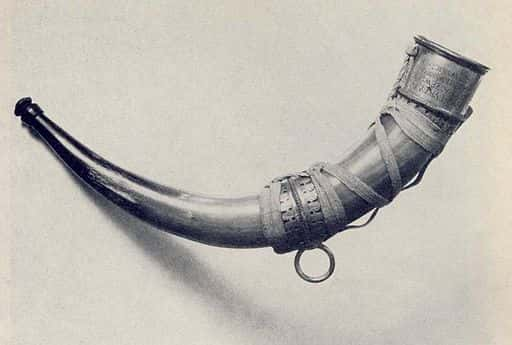 Royal Armoury, Public domain, via Wikimedia Commons
Royal Armoury, Public domain, via Wikimedia Commons History of the Hunting Horn
The first hunting horns were created from animal horns. Goat, sheep, and in some cases cow horns were used for these horns. The intention behind them was to allow all of the hunters to communicate with one another during the hunt. In addition, dogs could be trained to the sound of the horn, with different patterns equalling different commands. Each horn can only play a single note, but each horn is also unique. Different horns and different blowing patterns could equate to different messages between the hunters.
The advent of brass coiled hunting horns meant that a wider range of notes could be played. Through this, hunting became more organised. More complex notes meant that more complex messages could be conveyed. The coiled metal horns could produce a range of sounds. They are also convenient for riding and hunting. When riding, the user can place their arm through the coil shape and wear the horn on their shoulder, keeping it out of the way until it is needed.
Towards the end of the 18th century, the landscape of England had changed dramatically, and was still rapidly evolving. Industrial revolution soon took hold, and farmlands became much more rigid. The English countryside had a lot more open space where there had once been dense forest. This meant that communication between hunters didn’t need to be so complex, as there weren’t many trees blocking their view. Equally, the increased number of fences and walls that had to be overcome meant that elaborate horns were too complicated and expensive.
The shorter, straight metal horn was invented as an easy solution to communication whilst traversing the countryside. These horns were less cumbersome, meaning they were much less likely to break from an unexpected dismount mid-hunt. These horns, bugles, have no valves to alter the pitch of the tune. Instead, the notes being played can be changed by manipulating the shape of the lips. This horn persists in popularity today. It is suitable for riding and hunting, and its shape and size make it ideal.
How to Blow a Hunting Horn
Among hunters, the skill of properly playing the hunting horn is not especially well-known. Similar to other brass instruments, the principles of playing a hunting horn revolve around breath control. With pursed lips, holding the mouthpiece of the horn flush against the lips is the beginning position. The player then pushes a steady stream of air through their lips and into the mouthpiece. After some practise, a beginner can understand the amount of pressure and breath required to achieve a consistent sound from the instrument.
More advanced horn players can experiment with the degree of pursing they use in their lips. Different notes can be produced from the horn by loosening or tightening the lips. Using the tip of the tongue, players can also articulate the different notes by tapping their tongue to the mouthpiece whilst playing. Practising with consistency can help to rapidly improve one’s horn-playing ability.
Materials Used for the Hunting Horn
The earliest hunting horns were crafted using animal horn. Horns like these have existed since the Bronze Age. These were used to co-ordinate between hunters whilst pursuing their game. Another popular material for hunting horns is brass. Brass was used for horns of all kinds in countries around the world. Ancient Romans made brass bugles in the 4th century. They created coiled hunting horns that were easier to carry whilst on horseback. Eventually, metals like silver were also used in the production of hunting horns. More advanced horns had silver mouthpieces, likely because of the antibacterial properties of silver.
